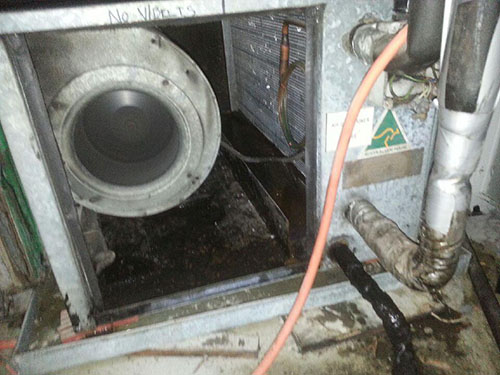Eliminate the Corrective Maintenance False Economies in Commercial Property.
All of these events creating false economies in corrective maintenance are easy to avoid; the methodology is in the processes and procedures adopted by the facility management company.

The first thought which comes to mind is the Building Manager and their role in the financial loss event; however, it is not so much the Building Manager but the processes and procedures which are in place to support that role.
Building Managers change jobs, take annual and sick leave and simply forget. Consequently, local site knowledge of the building manager should not be the first and last resort to reduce or minimize these financial losses.
So how do we manage this situation to negate and/or reduce the likelihood of a financial loss occurring unnecessarily? How can we support our Building Managers so that when they take leave, they are not called every five minutes by the replacement?
A demonstration to Eliminate False Economies in Corrective Maintenance.
To demonstrate our point, we will use a simple yet, a common example where the “demarcation” lines between a contractor’s tasks are grey or blurred;
to begin:
An event occurs on site where the alarm lights, which activate when the temperature in a cool room becomes too high, stop working and the contents in the fridge have been lost or put at risk. Which Electrician should be called? Should the call go to the refrigeration mechanic, the HVAC electrician or the light and power electrician or even the BMS (Building Management Systems)company? Knowing which company installed the equipment is a good start, but sometimes that company subcontracted those works at the time the project was installed.

Keeping good records and making them accessible
Good record-keeping is the key.
Good record keeping can be in the form of an Asset Register, which is easily accessible via a web portal for all relevant parties to use and understand. The asset register should be intuitive to use and up to date.
Use an Asset Register
The Asset Register is a straightforward database where the relevant site information is kept:
In the above example, the Building Manager could search the database for the fridge, the directory of the database, much like that in your Laptop, serves to find the information and take the Building Manager to a new directory if required.
The database of assets should be cross-correlated; for example, if the alarm light for the fridge is actually associated with refrigeration, then it will be easily found in the item description and/or a link to a new directory to investigate further.
At the very least, the Asset Register will start the phone call process at a logical point, as opposed to calling the general light and power electrician first in a frenzied panic when the light and power electrician would not have been involved.
Implement a solution
Our solution is a process that involves an intuitive and accurate Asset Register that is up to date. An argument that software is expensive and keeping the register updated is expensive and we “just don’t have the time” does not hold weight. Why? Do you have the time to call the wrong contractor and the money to pay these contractors? Do you have the time and money to forget valuable information or pay for warranty repairs that should be covered by the relevant contractor?
Do you have a Building Manager with a USB port in the side of his head that you can download the information for when they go on leave?
The bigger and more complex your site is, the more exposure to risk is carried if an Asset register is not implemented. Creating and keeping the database is actually more imperative on these sites as several staff are often involved in the management of the site at differing levels.
Optimizing your staff time can be greatly assisted with an implemented solution.
Staff Training
Staff Training is an important part of this strategy; they need to know what equipment they are investigating, how the equipment relates to other equipment within the database and how to search the database effectively.
Staff need to be aware of effective questions to ask the relevant contractor to confirm their expertise in the relevant equipment.
Process and procedures should be in place to allow staff the time to keep the database of an asset register current and accurate. This includes entering services dockets, costs and service maintenance and/or correctional maintenance events.
Conclusion
So think about it, whether you involve us or not, the better and more accessible your record keeping is, the more efficient your operations are, and with more efficiency comes profit. (now there’s a nice thought).
Nigel Wraight
Principle
Forte Asset Services


